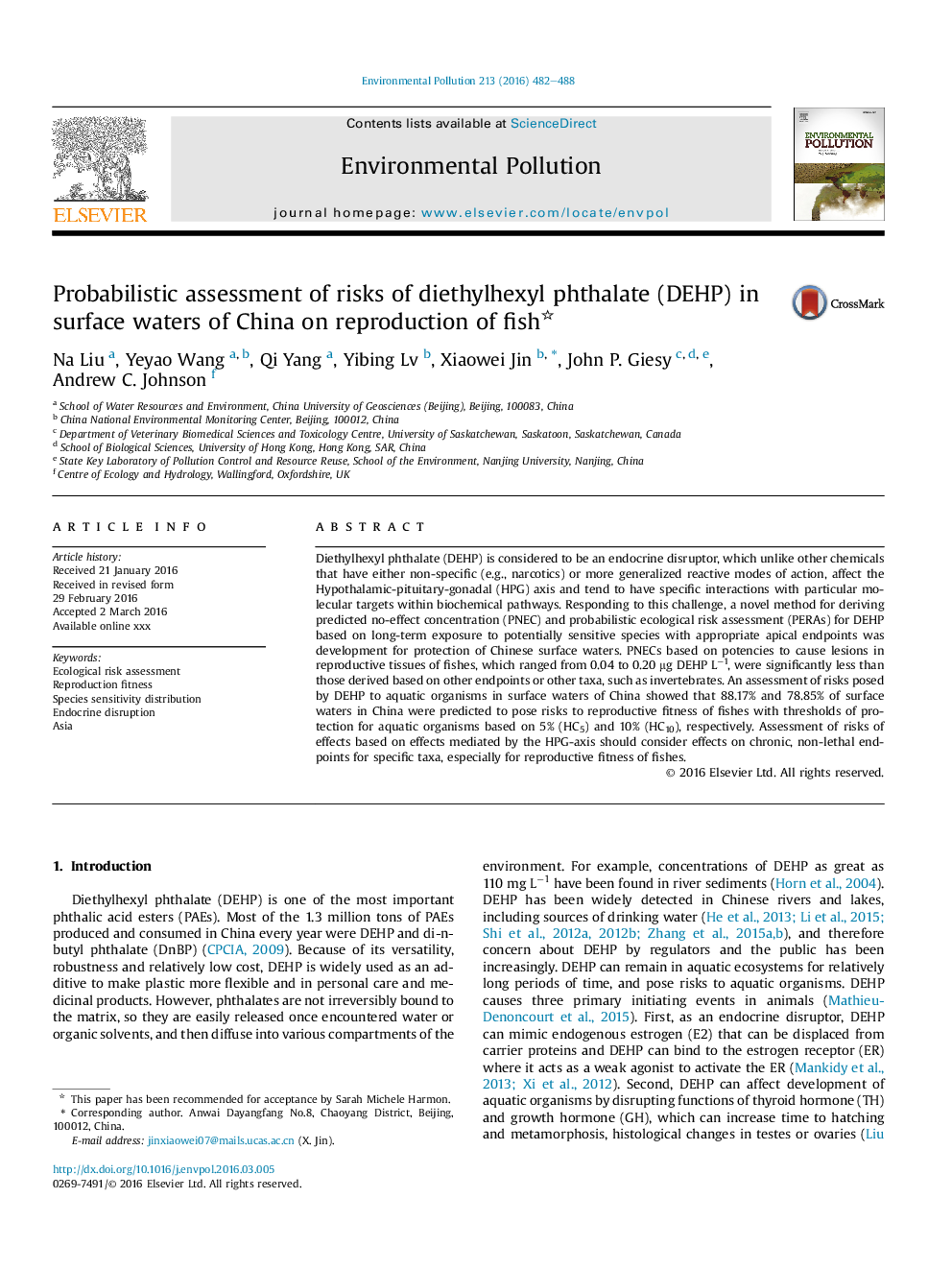| Article ID | Journal | Published Year | Pages | File Type |
|---|---|---|---|---|
| 6314920 | Environmental Pollution | 2016 | 7 Pages |
Abstract
Diethylhexyl phthalate (DEHP) is considered to be an endocrine disruptor, which unlike other chemicals that have either non-specific (e.g., narcotics) or more generalized reactive modes of action, affect the Hypothalamic-pituitary-gonadal (HPG) axis and tend to have specific interactions with particular molecular targets within biochemical pathways. Responding to this challenge, a novel method for deriving predicted no-effect concentration (PNEC) and probabilistic ecological risk assessment (PERAs) for DEHP based on long-term exposure to potentially sensitive species with appropriate apical endpoints was development for protection of Chinese surface waters. PNECs based on potencies to cause lesions in reproductive tissues of fishes, which ranged from 0.04 to 0.20 μg DEHP Lâ1, were significantly less than those derived based on other endpoints or other taxa, such as invertebrates. An assessment of risks posed by DEHP to aquatic organisms in surface waters of China showed that 88.17% and 78.85% of surface waters in China were predicted to pose risks to reproductive fitness of fishes with thresholds of protection for aquatic organisms based on 5% (HC5) and 10% (HC10), respectively. Assessment of risks of effects based on effects mediated by the HPG-axis should consider effects on chronic, non-lethal endpoints for specific taxa, especially for reproductive fitness of fishes.
Related Topics
Life Sciences
Environmental Science
Environmental Chemistry
Authors
Na Liu, Yeyao Wang, Qi Yang, Yibing Lv, Xiaowei Jin, John P. Giesy, Andrew C. Johnson,
